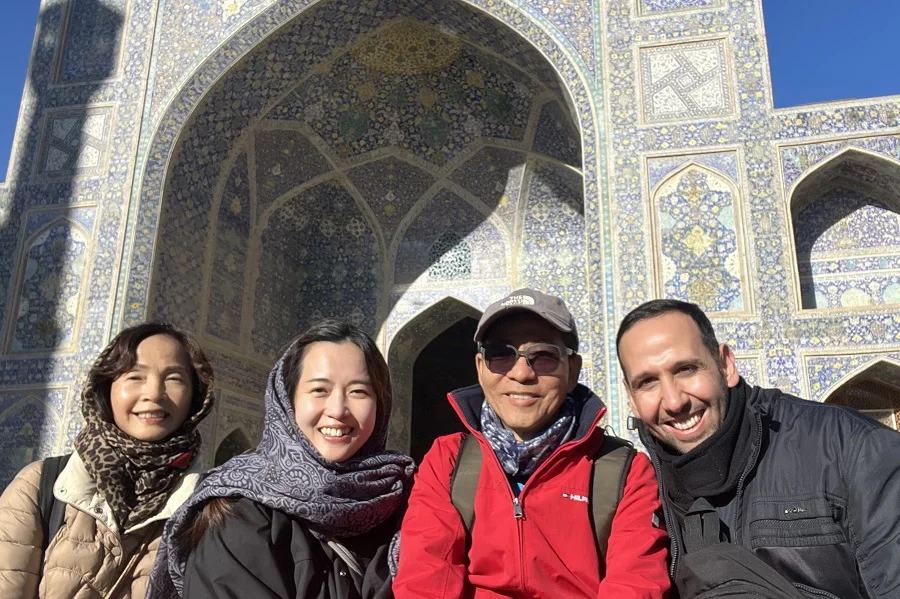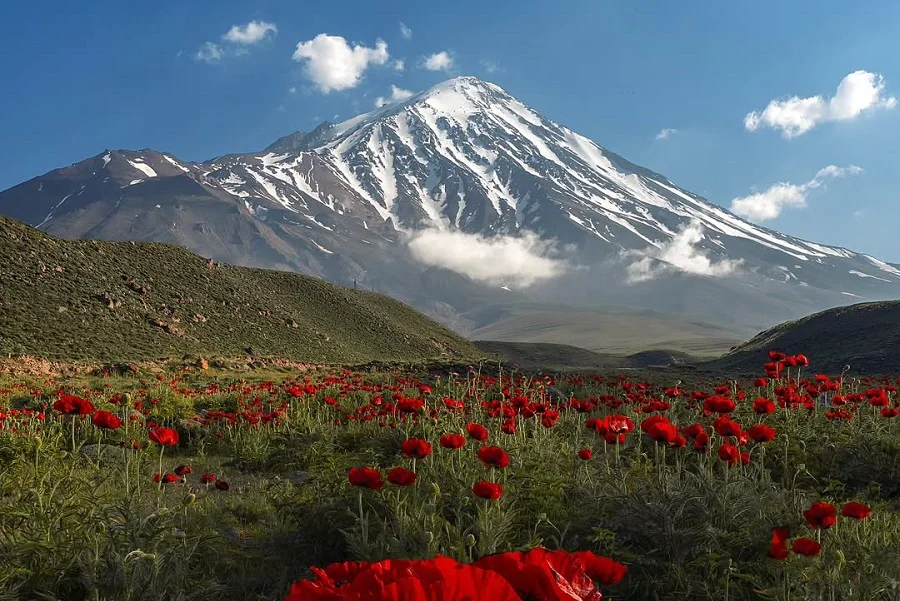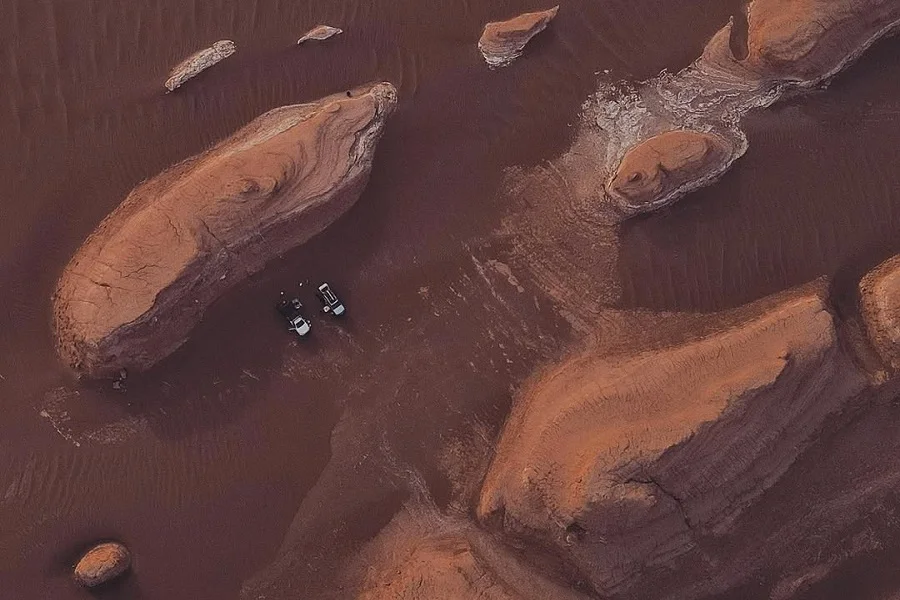
Best Tours of Iran for Making A Lifelong Memory
Finding the best tours of Iran may seem challenging at first, but with a few simple tips, the process can actually become exciting. The country is vast and full of contrasts, from golden deserts and snow-capped mountains to bustling bazaars and peaceful villages, so choosing what to see depends on your interests. Whether you’re fascinated by Persian kings and poets, curious about traditional crafts and cuisine, eager to explore vibrant cities, or seeking peace in breathtaking landscapes, Iran has something for everyone. To help you narrow down your options, here are some of the most remarkable highlights that every traveler should consider when planning a trip to Iran.
Iran, home to nearly 90 million people and covering about 1,648,000 square kilometers, is one of the world’s most diverse and fascinating destinations. Known as a four-season country, Iran offers travelers the unique opportunity to experience completely different climates at the same time of year. You can ski on the snowy slopes of Tehran’s Alborz Mountains in the morning, then take a short flight to Qeshm Island in the Persian Gulf and relax on its sunny beaches in the afternoon.
Beyond its remarkable weather contrasts, Iran is filled with stunning natural scenery, from lush northern forests and volcanic peaks to golden deserts and green valleys. The variety doesn’t end there: you can wander through thousand-year-old historical sites, explore colorful bazaars, or taste delicious local dishes that change from one region to another. Whether you’re a nature lover, adventure seeker, or culture enthusiast, Iran offers endless possibilities to match every traveler’s taste and style.
Top Things to See and Do on Your Best Tour of Iran
Mountains:
Iran is a paradise for trekking and nature enthusiasts, offering some of the most spectacular mountain landscapes in the Middle East. The country is defined by two major mountain ranges, the Alborz in the north and the Zagros in the west , each with its own unique beauty and character.
The Alborz Mountains, stretching along the southern edge of the Caspian Sea, are home to Iran’s highest peak, Mount Damavand (5,671 meters), a dormant volcano and a symbol of Persian pride. Trekkers can explore lush green valleys, traditional mountain villages, and breathtaking trails that offer panoramic views of snow-covered summits.

Meanwhile, the Zagros Mountains extend across western Iran, covering vast regions filled with oak forests, deep canyons, and nomadic tribes who still follow ancient traditions. This range is perfect for travelers seeking off-the-beaten-path adventures, cultural encounters, and peaceful hikes through untouched nature.
Whether you’re an experienced climber or simply enjoy scenic walks, Iran’s mountains promise unforgettable experiences all year round.
Seas:
Iran is one of the few countries in the world blessed with access to three different seas, each offering its own charm and character. In the north, the Caspian Sea, the world’s largest enclosed inland body of water, is surrounded by lush forests, rice paddies, and tea plantations. This region is famous not only for its scenic beauty but also for its world-renowned caviar, produced from the sturgeon fish native to these waters. The mild climate and green landscapes make northern Iran a perfect escape from the country’s hotter regions.
In the south, the Persian Gulf and the Oman Sea stretch along Iran’s coastline, opening the country to the waters of the world. Here, travelers can visit stunning islands such as Qeshm, Hormoz, and Kish, each offering a mix of natural wonders, local culture, and adventure. From colorful salt caves and coral reefs to ancient ports and friendly coastal communities, Iran’s southern shores are full of surprises waiting to be explored.
Whether you’re enjoying fresh seafood by the sea, diving into the turquoise waters, or watching the sunset over the Persian Gulf, Iran’s coastal regions offer unforgettable experiences for every traveler.
Deserts:
Iran’s deserts are among the most mesmerizing in the world, offering a blend of silence, beauty, and mystery that few places can match. The country is home to two major deserts: the Dasht-e Kavir (Great Salt Desert) in the center and the Kavir-e Lut (Lut Desert) in the southeast. Both are vast, awe-inspiring landscapes shaped by time, wind, and sun, perfect for those seeking peace and adventure in nature’s purest form.
The Lut Desert, recognized as a UNESCO World Heritage Site, is particularly famous for holding the record as the hottest place on Earth, with ground temperatures once measured at over 70°C (158°F). It’s also known for its spectacular Kaluts, towering sand formations sculpted by centuries of wind erosion, creating a surreal and almost otherworldly scenery. Many travelers visit the area to witness its golden dunes, star-filled skies, and the unforgettable silence of the desert night.

The Dasht-e Kavir, on the other hand, is a vast salt desert where cracked earth, salt plains, and small oases reveal another side of Iran’s natural beauty. Villages like Garmeh and Mesr nearby offer glimpses of traditional desert life, where hospitality and simplicity define the culture.
Exploring Iran’s deserts is not just about seeing sand; it’s about experiencing the stillness, the starlit nights, and the timeless connection between people and the land.
Ancient cities and historical monuments:
Iran is often described as a living museum, where thousands of years of history come to life in its ancient cities, royal palaces, and magnificent monuments. While every corner of the country holds traces of its glorious past, five cities stand out as the most popular and culturally rich destinations: Tehran, Isfahan, Shiraz, Yazd, and Kashan. Together, they form what travelers call Iran’s Classic Route, a journey through time that captures the essence of Persian civilization.
In Tehran, the vibrant capital, modern life meets royal history in places like the Golestan Palace, Niavaran Complex, and the National Museum of Iran. Moving south to Isfahan, often called “half the world,” visitors are enchanted by its breathtaking Naqsh-e Jahan Square, Shah Mosque, and iconic bridges over the Zayandeh River.
Shiraz, the city of poets and gardens, shines with the beauty of Persepolis, Pasargadae, and the colorful Nasir al-Mulk Mosque, also known as the Pink Mosque. Yazd, a UNESCO World Heritage city, fascinates travelers with its wind towers, mudbrick houses, and Zoroastrian heritage. Finally, Kashan offers a glimpse of Persian elegance through its historic houses, Fin Garden, and traditional bazaar.
Traveling along this classic route is like reading a living history book, each city revealing a new chapter of Iran’s rich and timeless story.
Off-the-Beaten-Path Sites:
Beyond the classic route, Iran hides countless treasures that reveal its diversity, history, and natural beauty. For travelers seeking something different and less crowded, these off-the-beaten-track destinations offer unforgettable experiences and deeper cultural connections.
The Bam Citadel in southeastern Iran, a UNESCO World Heritage Site, is the world’s largest adobe structure and a stunning reminder of ancient Persian architecture. Takht-e Soleyman, another UNESCO site, was once a sacred Zoroastrian sanctuary surrounded by mountains and a mysterious blue lake. In northern Iran, the Gonbad-e Qabus Tower, dating back to the 11th century, stands proudly as one of the tallest brick towers in the world.
For nature and adventure lovers, Qeshm Island offers dramatic geological wonders, including the Star Valley and Hara Mangrove Forests, while Alisadr Cave near Hamedan amazes visitors with its underground lakes and boat rides through illuminated chambers.

Spiritual travelers shouldn’t miss the Imam Reza Holy Shrine in Mashhad, the largest mosque complex in the world, attracting millions of pilgrims each year. Meanwhile, Meymand Village, with its cave-like homes carved into the mountains, showcases a 12,000-year-old way of life still preserved today.
Other gems include the peaceful Garmeh Oasis in the central desert, perfect for experiencing local hospitality — the mountain fortress of Qale Roudkhan in the lush north, and the ancient ruins of Bishapour City, once a grand capital of the Sassanid Empire.
Each of these sites offers a unique glimpse into Iran’s hidden beauty, far from the crowds, yet rich with history, authenticity, and wonder.
Nomads in Iran:
Iran is home to a rich tapestry of nomadic tribes, each with unique traditions, colorful clothing, and a way of life that has endured for centuries. Among the most well-known are the Bakhtiari and Qashqai tribes, primarily found in Khuzestan and Fars provinces in the southwest. These tribes are famous for their seasonal migrations, moving with their herds across mountains and plains, and for their vibrant handwoven rugs and textiles.
In the northwest, near the city of Ardabil, lives the Shahsavan tribe, known for their intricate carpets and traditional silver jewelry. Visiting their settlements offers travelers a rare glimpse into Iran’s pastoral culture and centuries-old customs.

For a truly immersive experience, you can stay overnight in nomadic tents, taste traditional meals cooked over open fires, and witness daily activities such as herding, weaving, and storytelling. Engaging with these communities allows visitors not only to observe but also to participate in the rhythms of nomadic life, creating memories that go far beyond ordinary sightseeing.
Iran’s nomads provide a living link to the country’s heritage, a world where simplicity, resilience, and tradition are beautifully intertwined.
Rural Life and Villages in Iran:
Iran is dotted with countless villages, each offering a glimpse into the country’s traditional lifestyle and regional diversity. Some villages, like Abyaneh, are perched in mountainous areas and are famous for their unique red-hued mudbrick houses, narrow winding streets, and centuries-old traditions still alive today. Others, such as Garmeh Village in the heart of the desert, provide a serene escape where time seems to slow down, surrounded by vast sands and peaceful silence.
Across the country, villages vary dramatically, from lush northern settlements among green hills to charming southern coastal villages with vibrant local cultures. Visitors can experience local crafts, traditional cuisine, and warm hospitality, making each stay a truly authentic journey into Iranian life.
With so many options, choosing the perfect village can be overwhelming. That’s where our professional travel organizers come in: they help you discover the villages that best match your interests, whether you’re seeking adventure, culture, or relaxation. Exploring Iran’s rural life is a chance to step off the tourist path and connect with the country in its most genuine and heartfelt form.
Religious Sites:
Iran is home to a rich spiritual heritage, with countless mosques, shrines, and holy sites that attract both pilgrims and travelers interested in history and architecture. Among the most significant are the Imam Reza Holy Shrine in Mashhad, the Fatima Masumeh Shrine in Qom, and the Shah Cheragh Holy Shrine in Shiraz. These sacred sites are not only important religious centers but also stunning examples of Persian art, featuring intricate tilework, grand courtyards, and beautifully decorated domes.
Visiting these sites offers a unique opportunity to observe daily religious practices, experience the deep devotion of pilgrims, and learn about the spiritual traditions that have shaped Iranian culture for centuries. Beyond their religious significance, these shrines and mosques are also architectural masterpieces, showcasing elaborate calligraphy, mirrored halls, and ornate designs that reflect the skill and creativity of generations of Iranian artisans.
For travelers, exploring Iran’s religious sites provides a fascinating blend of spirituality, history, and art, making them essential stops on any comprehensive tour of the country.

